DIY feral cat shelter
DIY feral cat shelter Learn how to build the best feral cat shelter to keep stray cats safe, warm, and protected year-round. Discover DIY designs, placement tips, and essential winter care tricks.
2/2/20253 min read
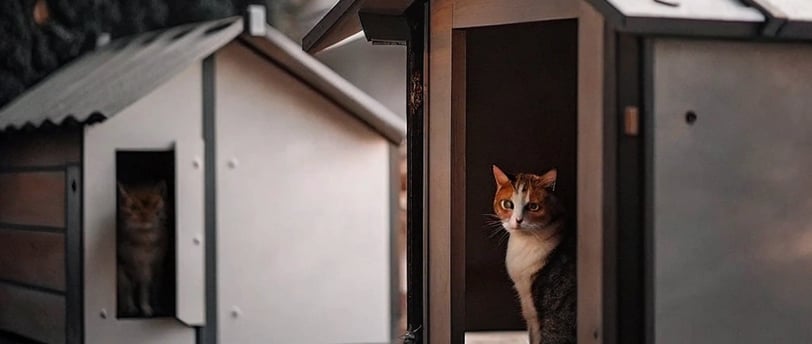

Feral Cat Shelter Designs: How to Build a Safe Haven for Stray Cats
Feral cats face harsh weather conditions, predators, and food scarcity, making proper shelter essential for their survival. Whether you're part of a TNR (Trap-Neuter-Return) program or simply want to help the local stray population, providing a well-designed shelter can make a huge difference. In this guide, we’ll explore the best feral cat shelter designs, materials, and placement tips to keep outdoor cats warm, dry, and safe.
Why Do Feral Cats Need Shelters?
Stray and feral cats often struggle to find safe, warm places to sleep. Proper shelters help by:
✔️ Providing warmth – Protecting cats from freezing temperatures.
✔️ Keeping them dry – Preventing rain and snow from soaking their fur.
✔️ Offering protection – Keeping them safe from predators and harsh elements.
✔️ Reducing conflicts – Giving each cat a private space to avoid fights.
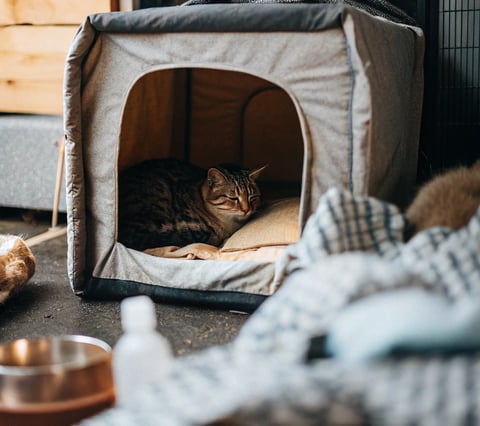

1. Essential Features of a Good Feral Cat Shelter
A well-designed shelter should meet these key requirements:
🏠 Insulation: Use materials like Styrofoam or Mylar blankets to retain heat.
🚪 Small Entrance: A small opening (5-6 inches) prevents predators from getting inside.
☔ Waterproofing: Use plastic bins, wood, or rubber containers to keep the interior dry.
🛏️ Comfortable Bedding: Straw (not hay) is the best insulation material.
🚫 Avoid:
Fabric blankets/towels – They absorb moisture and freeze in cold weather.
Overly large shelters – Smaller spaces retain heat better.
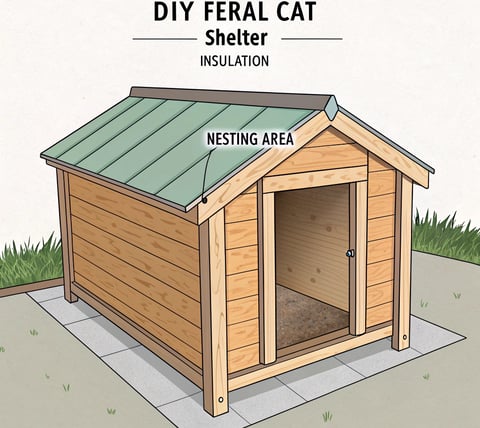

2. Best DIY Feral Cat Shelter Designs
Here are some of the best and most effective shelter designs for outdoor cats:
Learn more "Best Foods for Outdoor Cats: Nutrition Guide for Strays"
A. Plastic Storage Bin Shelter (Budget-Friendly & Easy)
🔹 Materials Needed:
✔️ Large plastic storage bin with lid
✔️ Smaller Styrofoam box (to fit inside)
✔️ Straw for bedding
✔️ Utility knife to cut an entrance
🔹 Instructions:
1️⃣ Cut a 5-6 inch entrance on one side of the bin.
2️⃣ Place the Styrofoam box inside for extra insulation.
3️⃣ Fill the interior with straw for warmth.
4️⃣ Secure the lid and place the shelter in a safe, dry location.
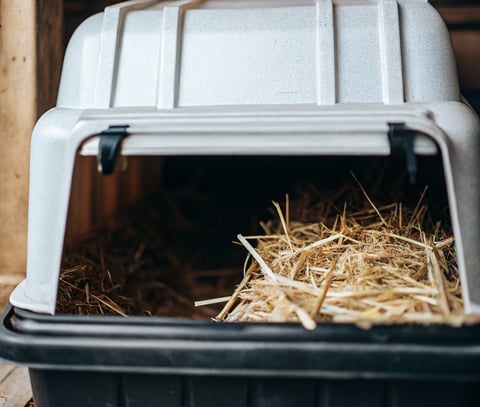

Check out "The Humane Society – Outdoor Cat Care Tips"
B. Wooden Cat House (Durable & Long-Lasting)
🔹 Materials Needed:
✔️ Plywood or pallet wood
✔️ Insulation foam panels
✔️ Straw bedding
✔️ Hinges for easy access
🔹 Instructions:
1️⃣ Build a small wooden box with a removable or hinged roof.
2️⃣ Line the interior with insulation foam.
3️⃣ Add straw for bedding and secure the structure.
4️⃣ Elevate the house slightly to prevent moisture buildup.
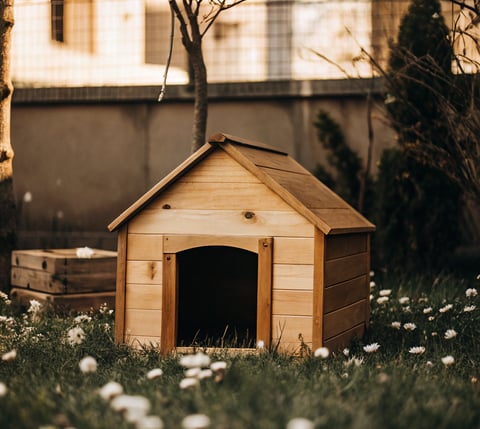

C. Upcycled Cooler Shelter (Highly Insulated & Weatherproof)
🔹 Materials Needed:
✔️ Large Styrofoam cooler
✔️ Straw for insulation
✔️ Duct tape to seal gaps
✔️ Utility knife to cut an entrance
🔹 Instructions:
1️⃣ Cut a 5-6 inch entrance on one side of the cooler.
2️⃣ Fill the bottom with straw.
3️⃣ Secure the lid and tape any gaps to prevent drafts.
4️⃣ Place the shelter in a dry, hidden area.
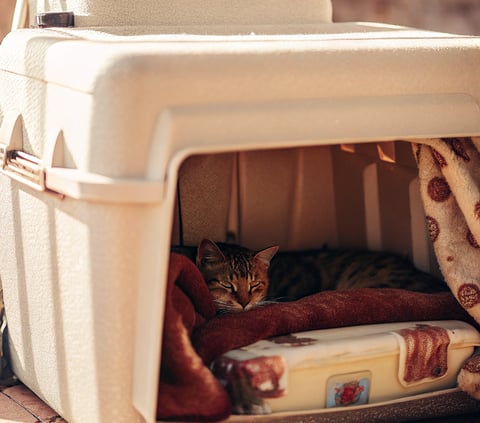

Learn more "Winter Cat Care: How to Help Feral Cats Survive the Cold"
3. Best Placement Tips for Feral Cat Shelters
📍 Find a Quiet Location: Place the shelter in a secluded area, away from busy roads and foot traffic.
📍 Elevate It: Keep it slightly raised off the ground to prevent flooding.
📍 Face the Entrance Away from Wind: Position the entrance so it's protected from cold winds.
📍 Camouflage It: Paint or cover the shelter to blend into the surroundings and deter unwanted attention.
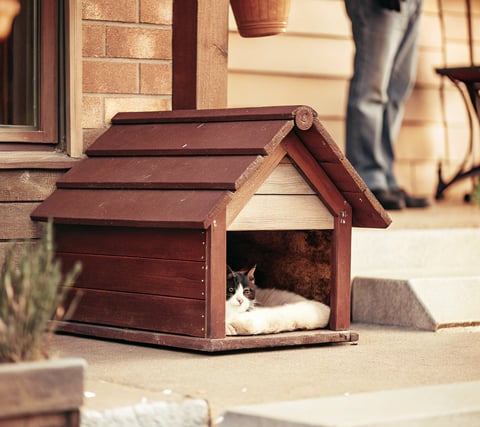

Check out "Alley Cat Allies – Feral Cat Shelter Building Guide"
4. Additional Winter Care Tips for Feral Cats
🐱 Provide Fresh, Unfrozen Water – Use heated bowls or check water frequently.
🐱 Offer Food in a Separate Area – Keep food dry and protected from rain/snow.
🐱 Create a Feeding Station – A covered feeding area keeps food accessible.
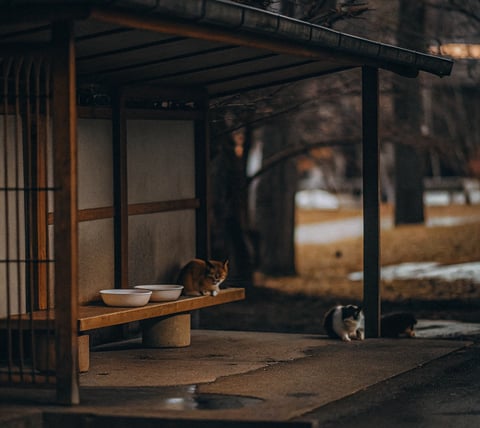

Conclusion: Helping Stray Cats Stay Safe and Warm
Building a feral cat shelter is a simple yet impactful way to support stray and community cats. Whether you choose a plastic bin, wooden house, or repurposed cooler, ensuring warmth and safety will improve their quality of life.
